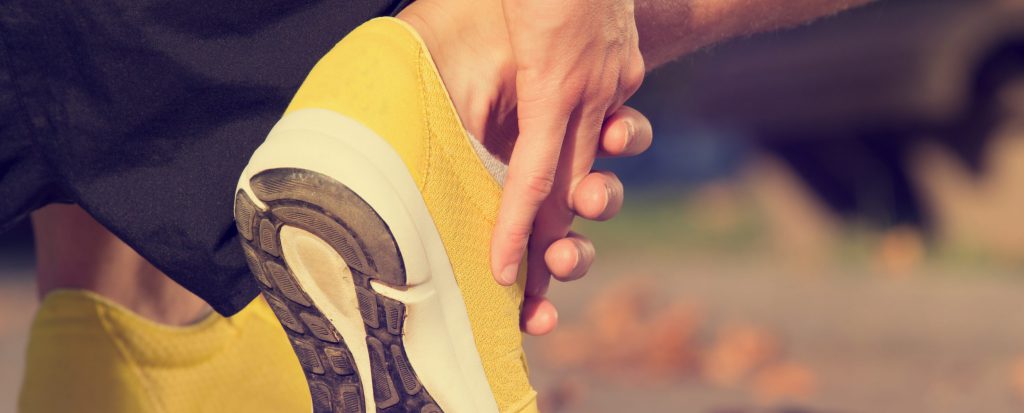Our lives are busy. Many of us don’t have a lot of time for regular exercise – so short, extreme bursts of activity our bodies experience over the weekend can prove to be harmful. If you’re one of the millions heading out on Saturday morning for your only weekly physical activity, there are some injuries you’re more likely to encounter.
Here are the top three injuries seen by the medical experts from our local weekend warriors. Keep this list handy so you can minimize damage to the injury before seeing a medical expert at one of the Urgent Team Family of Urgent Care & Walk-in Centers.
Achilles Tendon Rupture:
- What Is It? The Achilles’ tendon is one of the largest tendons in the human body; it is also one of the most often injured. The Achilles powers the foot to push off the ground during such activities as walking, running or jumping.
- How Do You Know? Injured patients report feeling like they’ve sustained a blow to the back of the ankle, and may hear a pop, followed by inability to put weight on the foot.
- How To Diagnose? The diagnosis of Achilles tendon rupture is made during a physical examination. Often, the clinician will feel a gap where the tendon should be. An MRI may be recommended for positive diagnosis, and surgery may be necessary depending on severity.
- What To Do Before You Get Here? Avoid putting pressure on the foot. Ice the area, and take non-prescription NSAIDS or acetaminophen to help with pain. Get into one of Urgent Team’s Family of Urgent Care & Walk-in Centers as soon as possible to not cause further damage.
Tennis Elbow:
- What Is It? “Tennis elbow” is a condition caused by overuse of arm, forearm and hand muscles. It is due to either sudden or subtle injury of the muscle and tendon area around the outside of the elbow. Tennis elbow specifically involves the area where the muscles and tendons of the forearm attach to the outside bony area. The name is a bit misleading as tennis elbow can be caused by many sports.
- How Do You Know? Pain spreads around the elbow and gets worse when you shake hands or squeeze and object. Repetitive movements, even using a toothbrush, may cause pain.
- How To Diagnose? A clinician can diagnose by moving the arm and wrist into certain positions to gauge pain. There will also be tenderness in the area of the affected tendons.
- What to Do Before You Get Here? Icing the area and taking non-prescription pain relief is the best at-home treatment, as well as avoiding the movements causing the pain.
Ankle Sprain:
- What Is It? These injuries occur when the foot twists, rolls or turns beyond its normal range of motions, causing stretching and tearing of ligaments in the ankle capsular ligaments.
- How Do You Know? Patients say they hear a “pop,” followed by the presence of swelling and pain. Inability to bear weight on the foot is common.
- How To Diagnose? A clinician will be able to determine the severity of joint instability; an X-ray may be needed to rule out an ankle fracture, which can look and act similar to an ankle sprain. While sprains heal on their own, the professionals at Urgent Team Family of Urgent Care & Walk-in Centers can determine if there is a broken bone.
- What to Do Before You Get Here? Rest, elevate and ice the ankle; keep compressed with a bandage and do not put pressure on the ankle.
We understand – weekends are for fun with friends and for seeking adventure. Just remember, should you need one of Urgent Team’s Family of Urgent Care & Walk-in Centers, we’re open nights and weekends at most locations, and you can walk right. Don’t take chances. Get checked out so you can get back to your weekend as soon as possible.
